The Museum of Fine Arts Boston, located between the Charles River and Northeastern University, is a popular destination for both visitors and locals. The museum, also known as the MFA, houses nearly 500,000 works showcasing examples of creativity and communication from all over the world. While the MFA’s 100 public galleries are filled with wandering visitors, just a freight elevator ride and a key card swipe away is 22,000 square feet of conservation laboratory space.
In those labs, conservators meld science and art to preserve the creations of peoples past for the people of the future. This November, Knight Science Journalism (KSJ) Fellows got an inside look at this little seen part of the museum — a behind the scenes tour that illuminated the pivotal roles that chemistry, biology, physics and other sciences play in the art world. “I’ve always had a hard time connecting with art,” shared KSJ fellow Lisa Grossman, “[Meeting conservators at the MFA has] given me something new to look for and a whole new set of questions to ask of the art.”
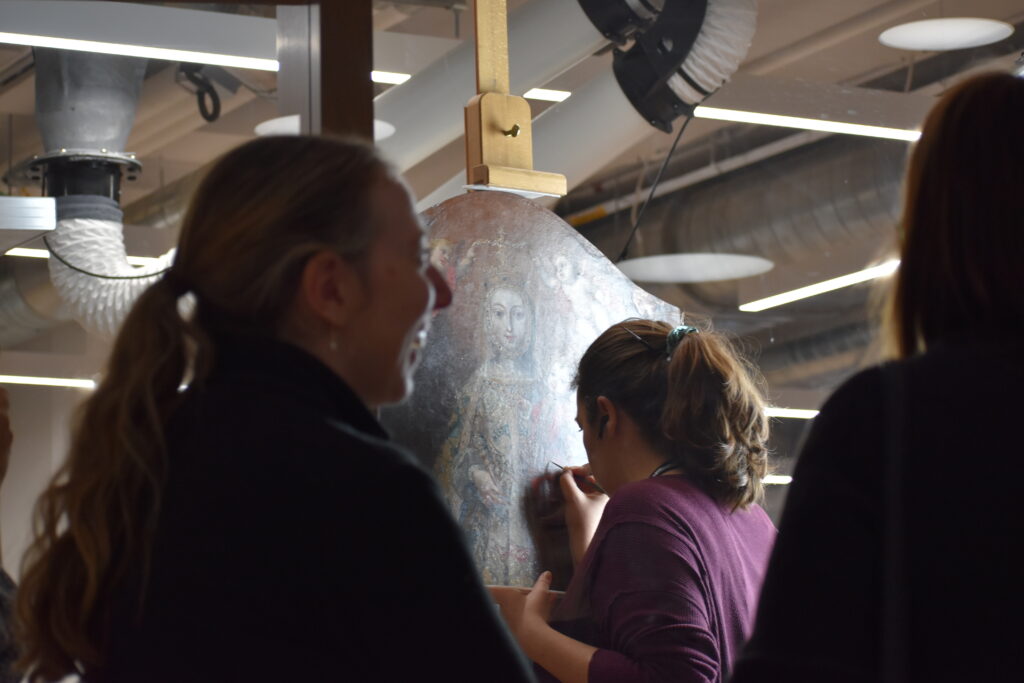
KSJ Fellow Nicky Phillips (left) and KSJ Director Deborah Blum (right) look through a glass window into one of the MFA’s conservation studios as a conservator (center) works on Our Lady of Guidance (Nuestra Señora de Guía), a painting from the 1760s by Venezuelan artist Juan Pedro López. Fellows quickly learned that conservation involves both fine art skills and a strong grasp of material sciences. Visitors can look through this same window at the MFA, but KSJ Fellows were given special access inside the labs.
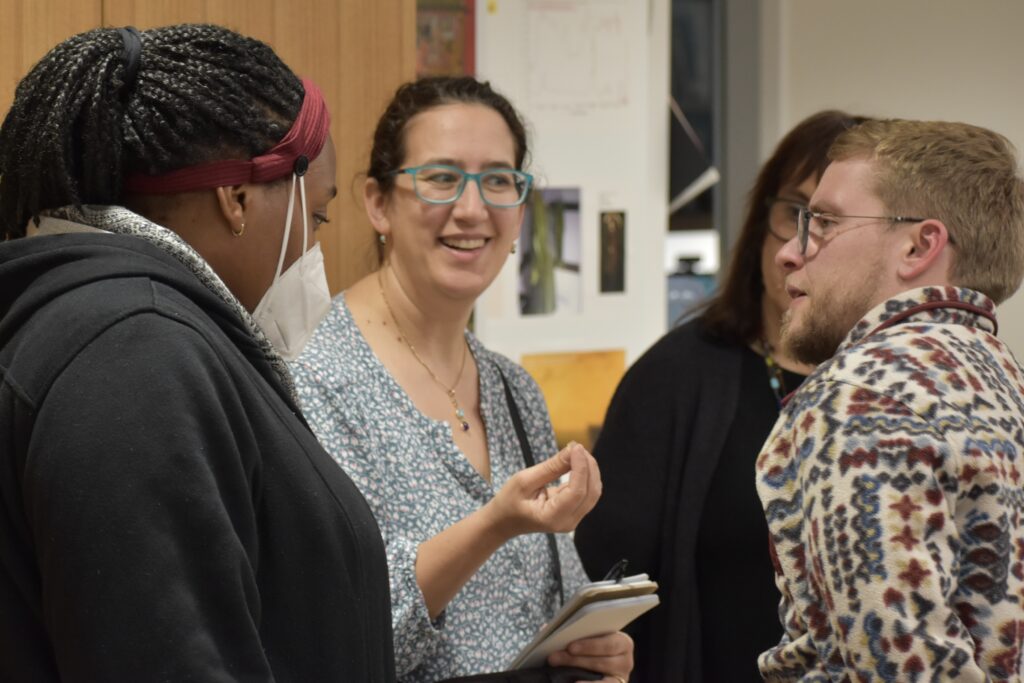
In the MFA’s Scientific Research Laboratory, Lisa Grossman (center) holds a tiny fragment of gold encased in a clear resin cube, as her husband Alexander Lussenhop (right) and Sharon Begley Fellow Deborah Balthazar (left) look on. The resin cube, which is used to hold and position the sample, is shaved down precisely, exposing an edge of the material and allowing scientists to examine its properties. The fragment, hardly wider than the thickness of a fingernail, and no longer than half a grain of rice, is considered to be a large sample.
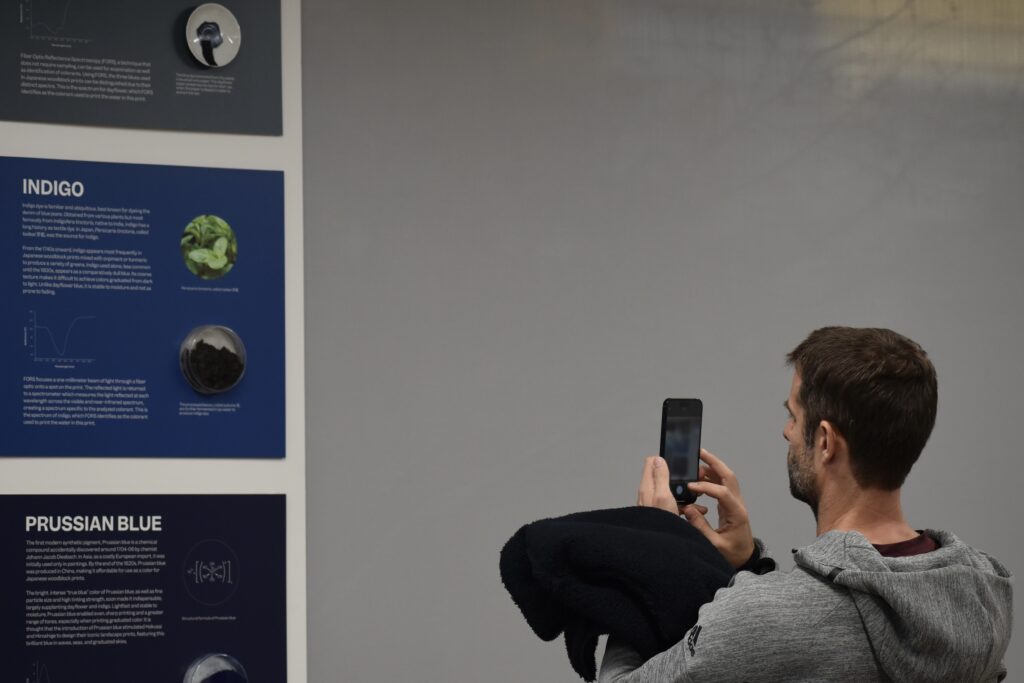
KSJ Fellow Kai Kupferschmidt photographs a large display about blue pigments in the MFA’s Scientific Research Laboratory. Kupferschmidt authored a book on the subject: “Blue. In Search of Nature’s Rarest Color.”
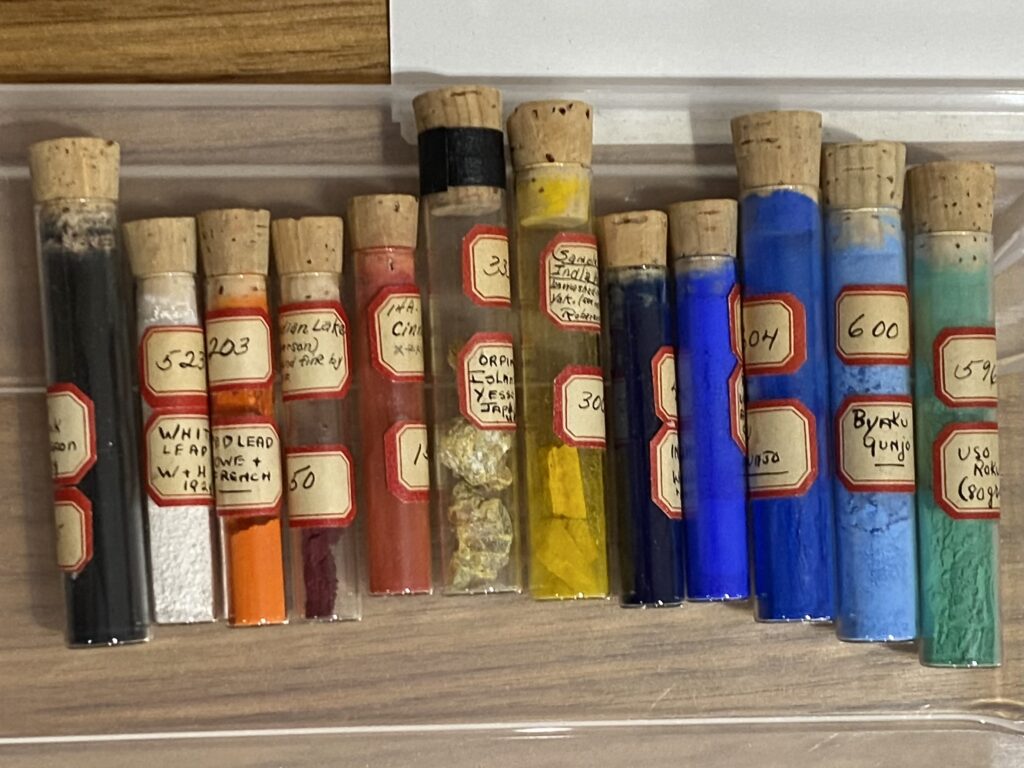
Materials used to create pigments, such as the ones pictured here in the MFA’s conservation labs, change drastically over time and geography. Pigment samples from specific times and places offer points of comparison for scientists looking to learn more about when, where, and how a work of art was created. One ongoing project at the MFA seeks to identify pigments in pieces of artwork from a wide variety of time periods in India.
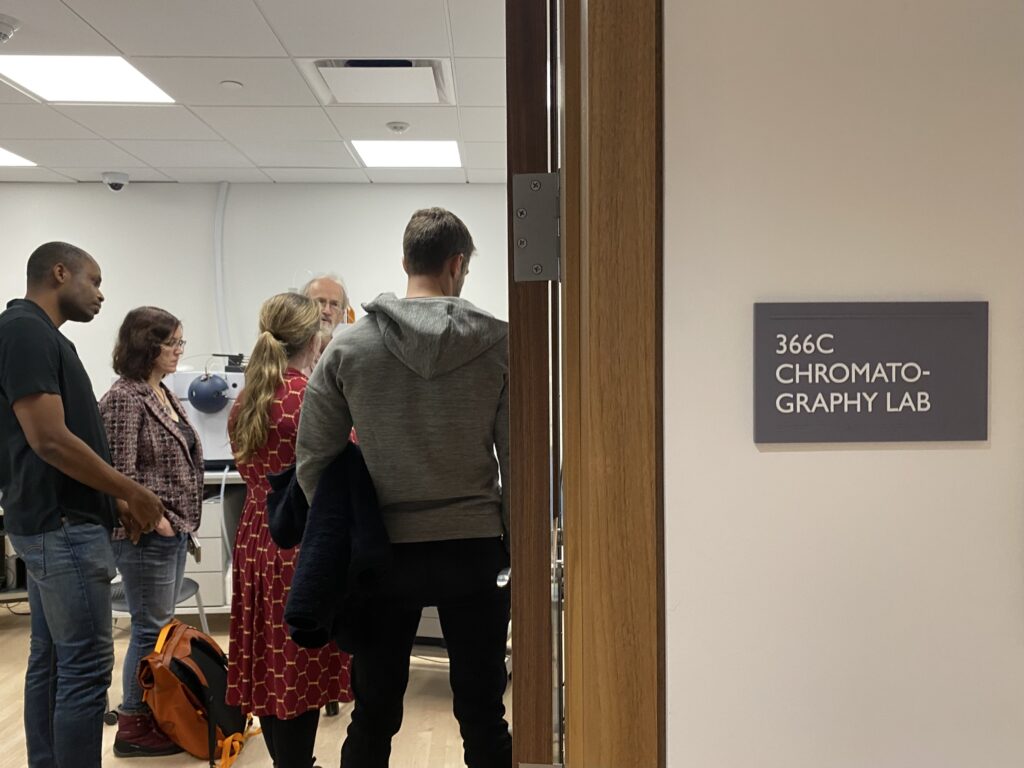
Fellows listened intently as one of two full-time scientists working in the Scientific Research Laboratory discussed some of the questions they have been investigating in the chromatography lab, and the careful but creative methods they used to arrive at their answers.
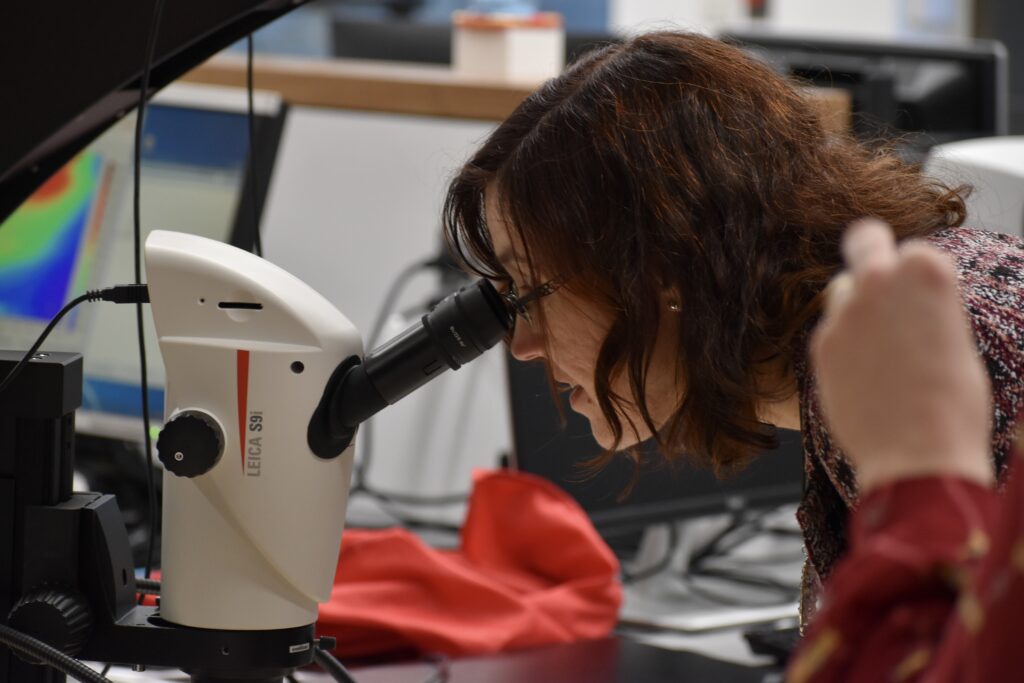
Madeline Ostrander peers through a microscope at crushed metallic bits of beetle wings used to create green coloration in a painting originating from India. Ongoing projects in the Scientific Research Laboratory seek to fill gaps in knowledge of obscure works, using a variety of materials and methods to determine a piece’s origin and resolve other unanswered questions.



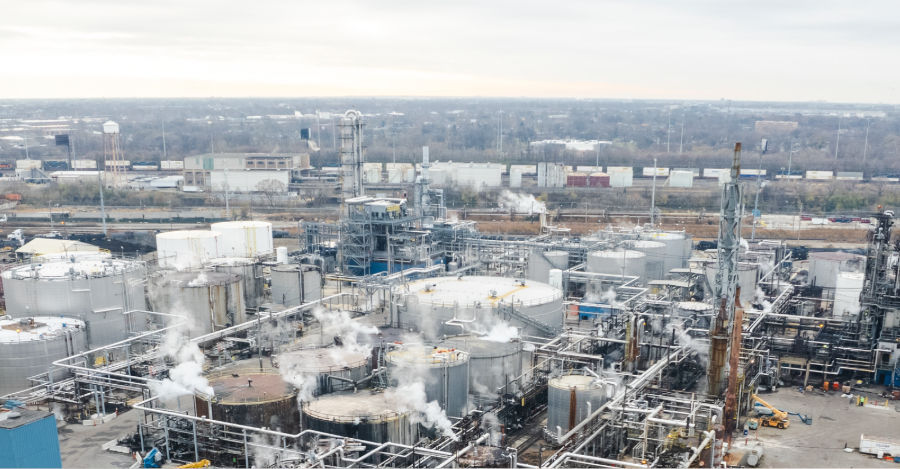
Leave a Reply